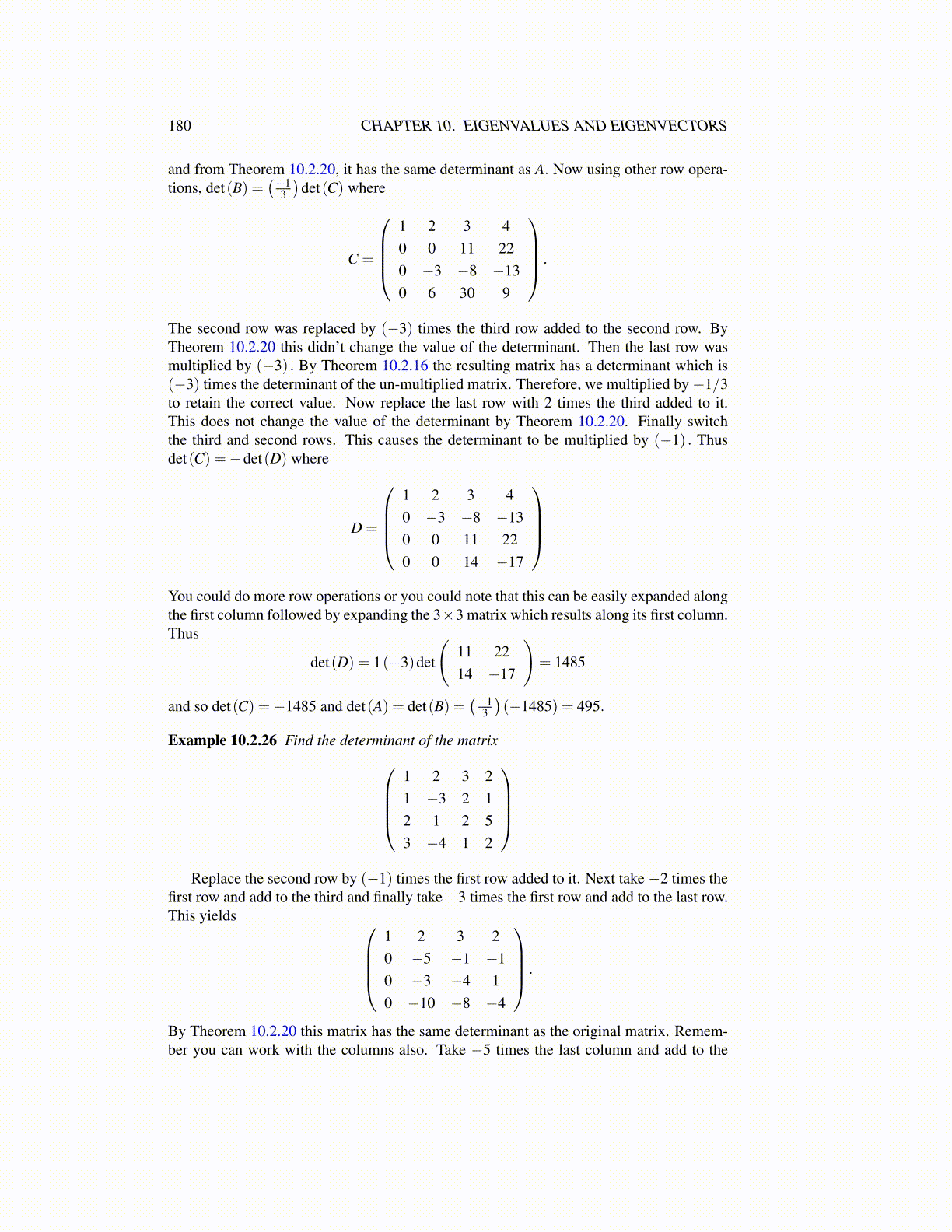
180 CHAPTER 10. EIGENVALUES AND EIGENVECTORS
and from Theorem 10.2.20, it has the same determinant as A. Now using other row opera-tions, det(B) =
(−13
)det(C) where
C =
1 2 3 40 0 11 220 −3 −8 −130 6 30 9
.
The second row was replaced by (−3) times the third row added to the second row. ByTheorem 10.2.20 this didn’t change the value of the determinant. Then the last row wasmultiplied by (−3) . By Theorem 10.2.16 the resulting matrix has a determinant which is(−3) times the determinant of the un-multiplied matrix. Therefore, we multiplied by−1/3to retain the correct value. Now replace the last row with 2 times the third added to it.This does not change the value of the determinant by Theorem 10.2.20. Finally switchthe third and second rows. This causes the determinant to be multiplied by (−1) . Thusdet(C) =−det(D) where
D =
1 2 3 40 −3 −8 −130 0 11 220 0 14 −17
You could do more row operations or you could note that this can be easily expanded alongthe first column followed by expanding the 3×3 matrix which results along its first column.Thus
det(D) = 1(−3)det
(11 2214 −17
)= 1485
and so det(C) =−1485 and det(A) = det(B) =(−1
3
)(−1485) = 495.
Example 10.2.26 Find the determinant of the matrix1 2 3 21 −3 2 12 1 2 53 −4 1 2
Replace the second row by (−1) times the first row added to it. Next take −2 times the
first row and add to the third and finally take −3 times the first row and add to the last row.This yields
1 2 3 20 −5 −1 −10 −3 −4 10 −10 −8 −4
.
By Theorem 10.2.20 this matrix has the same determinant as the original matrix. Remem-ber you can work with the columns also. Take −5 times the last column and add to the